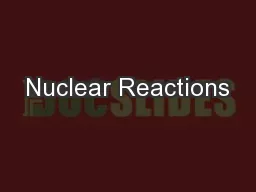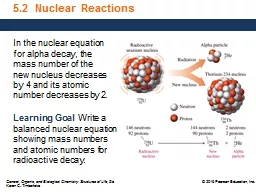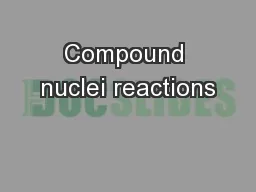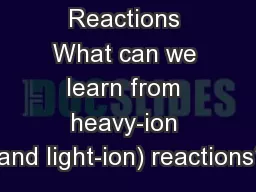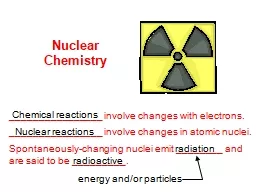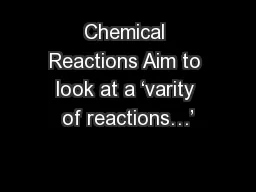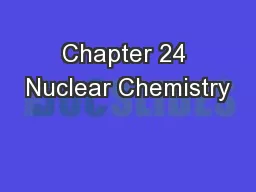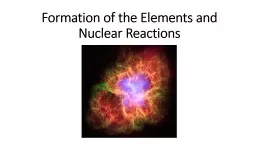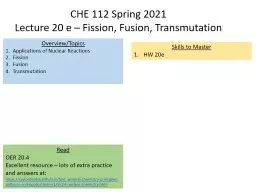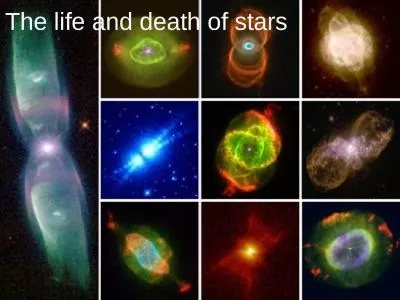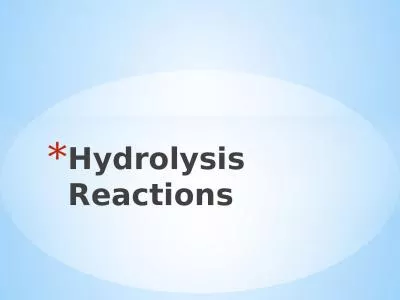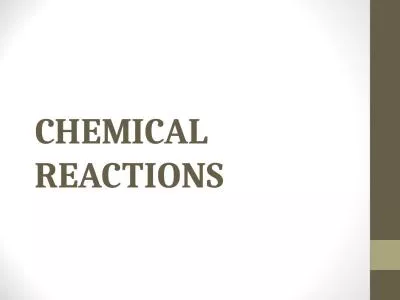PPT-Nuclear Reactions
Author : alida-meadow | Published Date : 2017-09-26
Fission and Fusion A brief history 1919 Ernest Rutherford experimented with bombarding nitrogen gas molecules with alpha particles emitted from bismuth214 Discovery
Presentation Embed Code
Download Presentation
Download Presentation The PPT/PDF document "Nuclear Reactions" is the property of its rightful owner. Permission is granted to download and print the materials on this website for personal, non-commercial use only, and to display it on your personal computer provided you do not modify the materials and that you retain all copyright notices contained in the materials. By downloading content from our website, you accept the terms of this agreement.
Nuclear Reactions: Transcript
Download Rules Of Document
"Nuclear Reactions"The content belongs to its owner. You may download and print it for personal use, without modification, and keep all copyright notices. By downloading, you agree to these terms.
Related Documents

